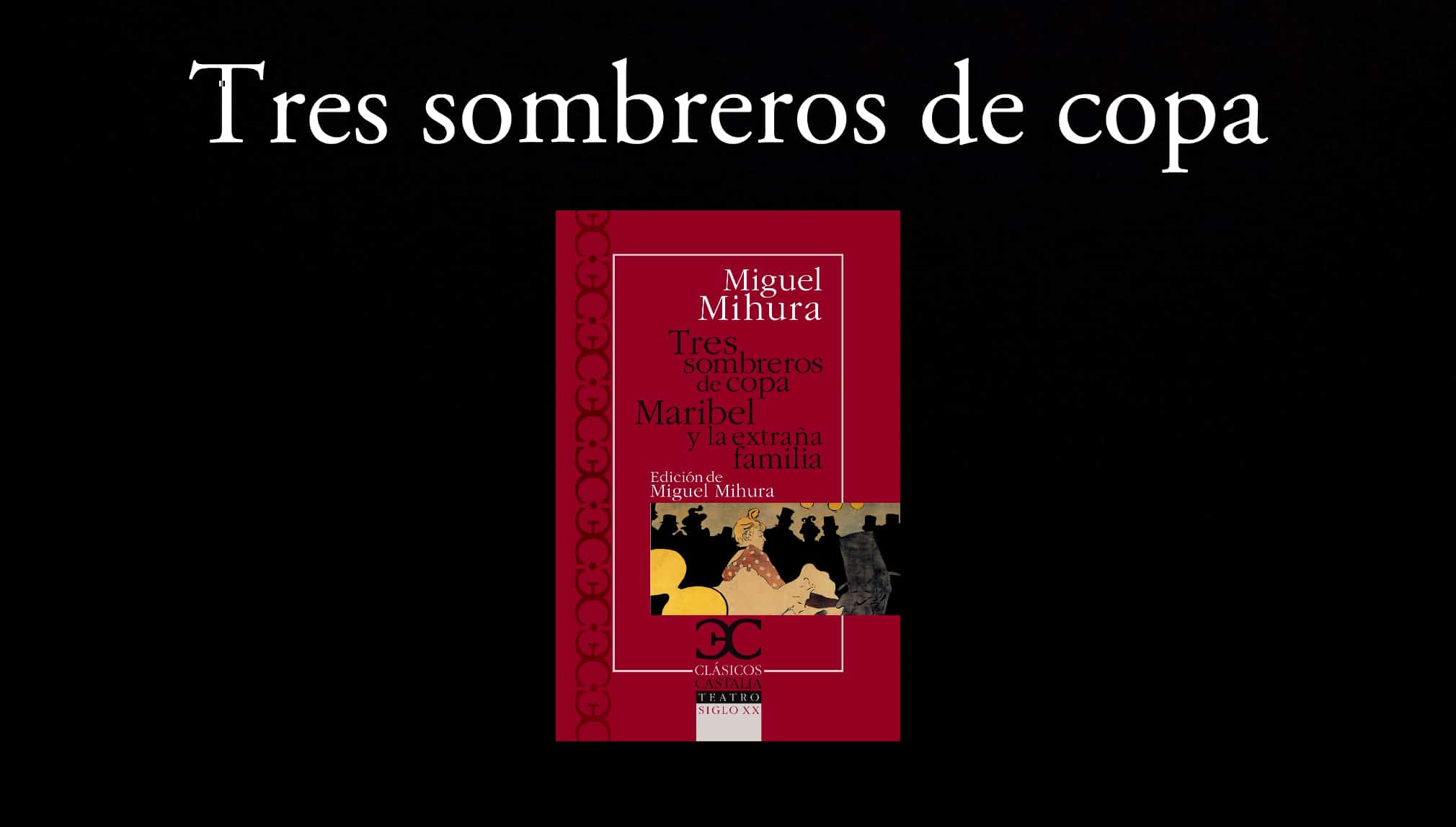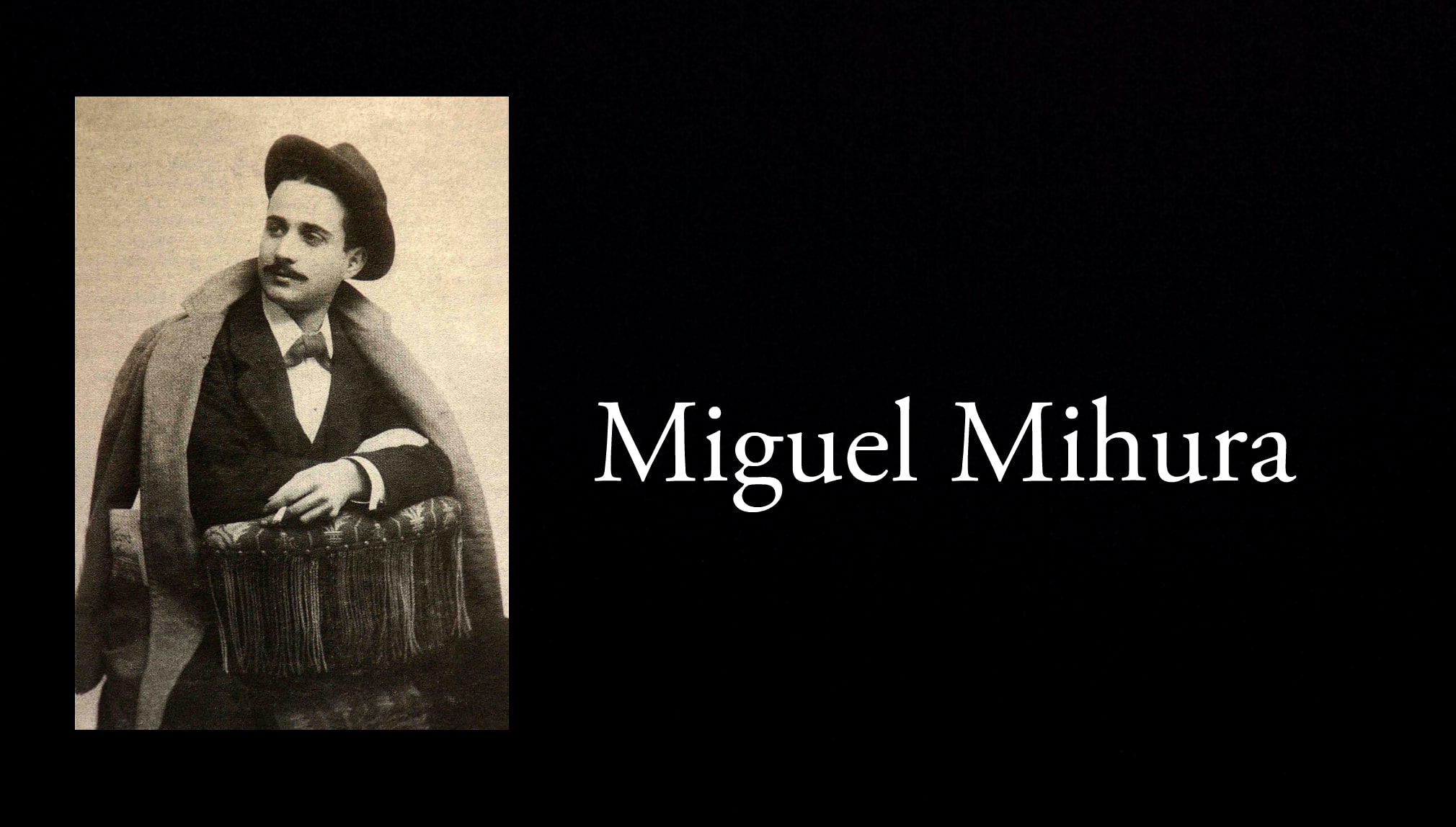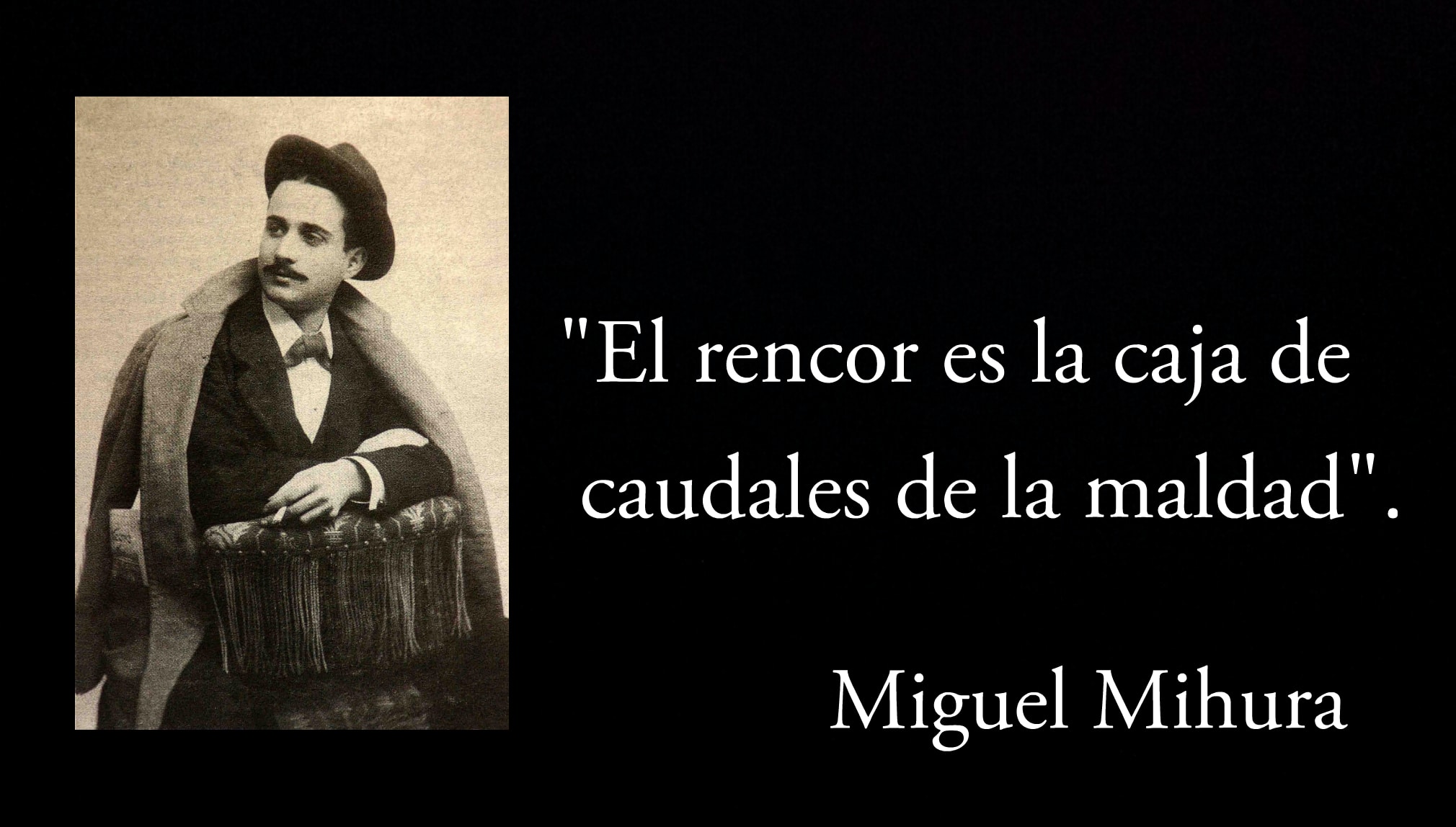
Three top hats.
Three hats is a play that renewed the genre of comedy in the middle of a difficult time in Spain and in Europe. This new style would be baptized in the middle of the XNUMXth century as "absurd". This manifestation was characterized by aversion to the traditional precepts of bourgeois theater, although without completely detaching itself from the conventional scheme composed of approach, conflict and outcome.
Written by Michael Mihura in 1932, Three hats it was not published until 1947 and its first staging was in 1952. It is a fairly accurate representation of other avant-garde trends of that time, such as committed and political theater, distinguished by its critical themes on the contradictions of society. This trend also stood out for the enhancement of poetic language as a way to evoke and express moods.
About the Author
Birth and first trades
Miguel Mihura was born in Madrid, Spain, on July 21, 1905. His father was a renowned actor in the Spanish capital, for which he grew up very familiar with the theatrical environment. His first jobs were as a columnist and cartoonist in magazines such as Gutiérrez, Macaco, Good Humor y Many Thanks. During the 1920s he also worked as a journalist.
Arrival of Three hats cup
In 1932 it culminated Three hats, considered one of the masterpieces of Spanish theater. However, the recognition of his creations did not happen quickly, it happened more than a decade later after founding and directing the magazine between 1941 and 1946 The quail, a publication considered of enormous relevance in the history of Spanish humor.
Other works
Other notable comedies by Mihura include Long live the impossible! or the accountant of the moons (as co-author, 1939), Neither poor nor rich, quite the opposite (1943) The case of the murdered woman (1946) Sublime decision! (1955) Maribel and the extra family (1959) and Ninette and a gentleman from Murcia (1964), among others. Freedom, antipathy towards conventional social norms and the emancipation of women are frequent themes in his narratives.
Recognitions and last years
His latest work, Only love and the moon bring fortune, dates from 1968. Additionally, he collaborated in the elaboration of cinematographic scripts in important productions such as Welcome Mr. Marshall (under the direction of Luis García Berlanga). Miguel Mihura was selected in 1976 to occupy chair K of the Royal Spanish Academy of the Language, however, he did not get to read the induction speech. He died in October 1977, in Madrid.

Miguel Mihura.
Context of Three Top Hats
Symbolism
Symbolism is one of the distinctive features of the work created by Mihura. In his representations the imagination plays a very relevant role to reflect and provoke feelings. In the same way, the narrative reveals the contradictions of the social behavior of the time, as well as the identity problem generated by the clash between the intended appearance and reality.
Expressionism
The characteristic sensitivity of expressionism is a frequent resource when describing the psychology of the characters. This is because all the elements present in each painting (the evening parties or the hats arranged in a certain way in a room, for example) are representations of the particular battles in the mind of each individual.
The satire
Dionisio, the protagonist, embodies the internal conflict suffered by many people from the well-to-do classes when they must decide between an ordinary planned existence - boring, actually - or an artistic life with fewer ties, more unpredictable and vertiginous. The author uses satire to laugh at the cowardice of those who prefer to remain in the safety of the known instead of the exciting uncertainty. This is reminiscent of Spanish comic theater of the early XNUMXth century.
A critique of puritanical morality
In the development of the story, there is constant contempt for conventional clichés and corny commons of puritanical morality and the protocol norms of bourgeois society. Then, Mihura took advantage of the circus environment to implement a new dramatic formula dominated by acrobatic numbers, mimes, irrational language and fantasy, likewise, everyday problems are approached with a mocking tone.
Another supposed background of the work
According to Rosa Martínez Graciá and Caridad Miralles Alcobas (2016), “the work was written as a result of a forced love breakup”. Apparently, reality and fiction are mixed together with the author's reflections on the limits of human cruelty. Thoughts derived from "his trip with the Alady company, his knowledge of the music hall and the dancing girls, as well as his own emotional situation" also converge.
Development of the plot of Three Top Hats
The work is divided into three acts. The prelude shows an unequal marriage very close to happening, between an ambitious poor employee willing to accept the impositions of bourgeois customs and a rich upper-class young woman. In this way, the protagonist (Dionisio) hopes to ensure economic stability and tranquility for the rest of his life after seven years of dating.
Act I
In the first act, Dionisio stays in a small provincial hotel the day before his wedding along with Margarita, Don Sacramento's daughter. At the moment in which Don Rosario - the owner of the hostel - shows him the room. Later, Paula, a beautiful dancer who is part of a magazine company, bursts in. She initially wanted to blackmail him through the black Buby. But Paula mistakes Dionisio for a juggler because he is just trying on his top hats for the ceremony when she appears. Then the rest of the girls from the company enter the scene and Dionisio gives in to Paula's insistence to invite him to a party that starts wildly in the next room.

Quote by Miguel Mihura.
Act II
The second act begins with Dionisio (already with a few drinks on top) very happy in the middle of the party. Simultaneously, a conflict develops between Paula and several of the members of the company. This is especially appreciated when she kisses Dionisio and then they make plans to leave together. Truth be told, Paula also has her own yearnings to break free from her harsh daily life as a dancer.
Act III
In the third act, all the illusion of Dionisio and Paula dissipates when Don Sacramento appears. He arrives to reprimand his future son-in-law for not answering the many phone calls Margarita made to him throughout the night. At that moment Paula understands that Dionisio is not a juggler, because in reality he has a marriage on the horizon and a planned life.
Dionisio clearly expresses that he does not want to marry. But Paula helps him get dressed and hands him a fourth hat (more appropriate, according to the girl's criteria) that he used to dance to the Charleston. At the end, Dionisio is guided by Don Rosario while he greets the dancer who is left contemplating the other three top hats… which he throws to the wind with a cry.